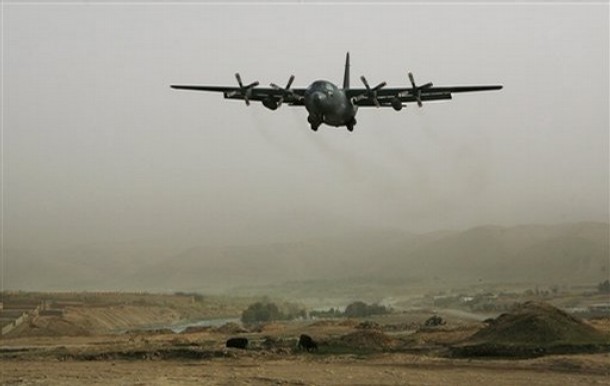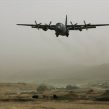
NATO Supply Routes Through the South Caucasus
Publication: Eurasia Daily Monitor Volume: 6 Issue: 168
By:

As the situation in the Khyber Pass deteriorates the region of the South Caucasus is becoming an increasingly viable option for the International Security Assistance Force (ISAF) non-military supply routes to Afghanistan. In March 9-11, transportation and logistics experts from Turkey, Georgia and Azerbaijan met in Baku to discuss the issues that would facilitate the shipment of goods to the ISAF mission in Afghanistan through the Northern Distribution Network (NDN) (Polit Pulse, March 9).
There are two main routes that are being considered for the shipment of goods to Afghanistan: the first is Poti (Georgia) – Baku (Azerbaijan) – Aktau (Kazakhstan) – Navoi/Termez (Uzbekistan); and the second is Baku (Azerbaijan) -Turkmenbashi (Turkmenistan) (Otechestvo, April 14). Generally, the South Caucasus route has become a viable option because of the deteriorating security situation in Pakistan’s Khyber Pass region. The route is also important because of the potential unreliability of the Russian position on supply routes on its territory (Geopolitika, January 12).
The first route in the NDN has a number of obstacles in its way. Russia has been very ambitious in both the South Caucasus and Central Asia in terms of political-military affairs and supply routes to Afghanistan. The Russia-Georgia war in 2008 potentially places the South Caucasus supply route in jeopardy. Any form of goods shipped by NATO vessels through the port of Poti and Batumi might be considered by Russia as an aggressive act directed at rearming Georgia and expanding NATO influence in the Black Sea region (Rossiyskaya Gazeta, May 6). Therefore, any permanent presence of non-littoral NATO ships in the Black sea could end up complicating the situation surrounding the supply of goods through the Georgian port of Poti. Russia will remain very sensitive to any new interaction between NATO and Georgia. Given its recent surge in political-military affairs within the CSTO, pressure on Kyrgyzstan to close its airbase at Manas and its involvement in water distribution issues in Central Asia, the Russian position in the region is becoming increasingly assertive.
If Russia demonstrates its opposition to Georgia’s involvement in ISAF supplies transiting the seaport of Poti, Azerbaijan will in turn also be more cautious in dealing with this issue. The recent gas agreement between Russia and Azerbaijan is one factor that predisposes Baku to be more sympathetic to Moscow’s concerns (RIA Novosti, April 17).
Another set of problems might arise between Kazakhstan and Uzbekistan. Given Russia’s active role in Central Asian military affairs via the CSTO, it is doubtful that it will remain silent on Uzbekistan and Kazakhstan providing corridors for ISAF that bypass Russia. Uzbekistan could renege on such cooperation with NATO if there is any additional pressure from Russia. Tashkent’s track record of frequently changing its foreign policy orientation is an additional complicating factor. However, this supply route would contribute to the consolidation of non-military ties of Georgia and Azerbaijan to Euro-Atlantic structures. Opening the route from Georgia and Azerbaijan will increase their strategic value for NATO and the U.S.
The second route within the NDN is more promising for a number of reasons. During the March 9-11 meeting in Baku, Azerbaijan made it clear that it would agree to the use of Baku for both the transit and export of goods to ISAF mission in Afghanistan. This means that Baku will serve as a stopping off point for ISAF-related cargoes and an exporter of locally produced goods. This route’s key advantages are that it does not rely on Georgian ports, which would arouse Russian suspicions; while if the second route only uses Turkmenistan’s air space it will be safer than overland transportation through Turkmen territory.
Turkmenistan has thus far proven to be a difficult country as a focus of United States engagement. This is especially evident in the trans-Caspian gas issues and Ashgabat’s current complications in its relations with Baku (Fuel Alternative, July 29). Indeed, air transportation from Baku would present a more practical logistical option than using trucks overland in Turkmenistan. This will help reduce unnecessary bureaucratic regulations and the duration in which the supplies are physically inside Turkmenistan.
Among these routes, the air corridor through Azerbaijan and Turkmenistan is the most feasible. This route will be best suited if ISAF transport planes fly directly to Baku from Turkey or any other NATO member. It is important to consider this route as superior to the Georgia-Azerbaijan-Uzbekistan-Kazakhstan alternative, based on Moscow’s discomfort over NATO-Georgia interactions, the prospect of Uzbekistan and Kazakhstan providing a corridor for ISAF troops which circumvents Russia, and the limited options for non-littoral ships in the Black Sea. Equally, Uzbekistan’s dependence on Russia over the distribution of water resources, might leave it open to manipulation by Moscow. Russia has recently backed Uzbekistan in the latter’s dispute with Tajikistan over the Rogun hydropower plant, which has increased Tashkent’s reliance on Moscow (www.kasparov.ru, February 2). There are other positive incentives when considering the Azerbaijan-Turkmenistan air route. Azerbaijan is willing to provide locally produced goods for NATO ISAF troops and its airspace for their transportation. Moreover, it is not a CSTO member, which allows Azerbaijan more freedom for maneuver in the region when dealing with NATO.
However, despite all the advantages of the Azerbaijan-Turkmenistan air corridor, it is still necessary to keep other options open. Diversity of supplies is important and given the dynamic political situation in the region, it is necessary to avoid relying on any single route, and therefore to diversify the NDN. The Russian-Central Asian route has to be retained. While the Russian position is important for all the Central Asian states, especially in regard to NATO-related issues, the addition of a Baku-Turkmenistan air route to the ISAF supply chain would allow the United States and NATO to develop better alternative routes for sending supplies to Afghanistan.




